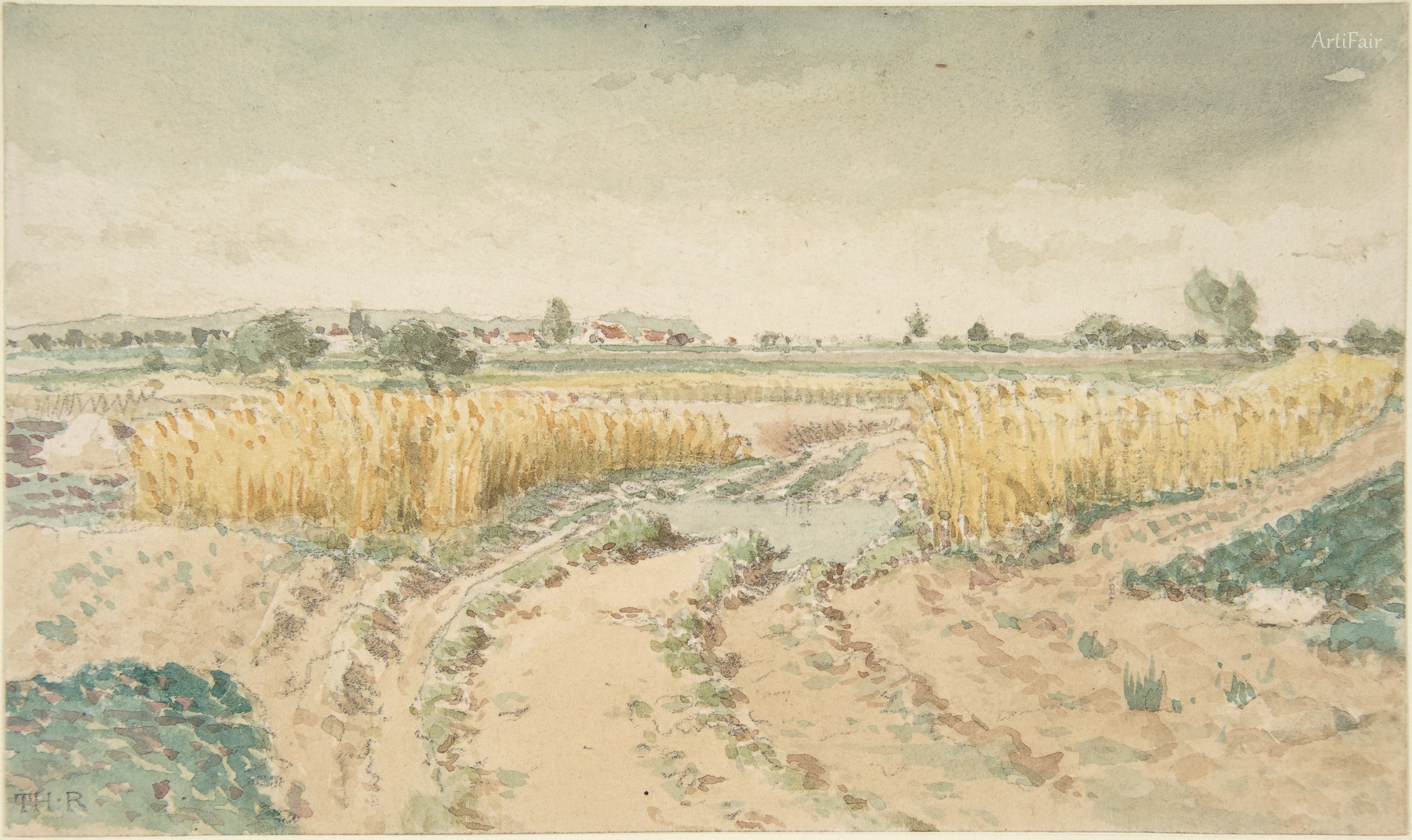
Art Appreciation
In this serene landscape, the viewer is invited to wander through a gently winding pathway that meanders through tall, golden wheat fields, captivatingly bathed in soft, diffused light. The palette is mostly muted, combining warm yellows and earthy browns that evoke the feeling of late summer days and a sense of abundant harvest. The blending of colors is typical of watercolor techniques, creating an ethereal feel; the edges of the wheat dance with subtle strokes, giving texture to the fields while exuding a delicate luminosity. In the distance, hints of green foliage and the faint outline of distant structures suggest a rural community nearby, grounding the scene in factual context while fostering imagination.
The composition balances both unity and variety, with the winding road guiding the eye naturally through the painting—inviting exploration. This path, laden with the promise of a pastoral journey, draws attention toward the horizon, where the sky is delicately rendered in grayish blues and ephemeral whites. The emotional impact is profound; there’s a tranquil stillness that resonates with the viewer, conjuring memories of rural explorations or peaceful moments in nature. Historically, during the mid-19th century, artists began to explore nature more freely, reflecting a shift in cultural perceptions toward land and agriculture, which had been central themes in Romanticist art. This piece stands as a beautiful testament to Rousseau’s sensitivity to the natural worlds, allowing the viewer to experience a moment of calm—an immersive embrace of simplicity and nature’s beauty.